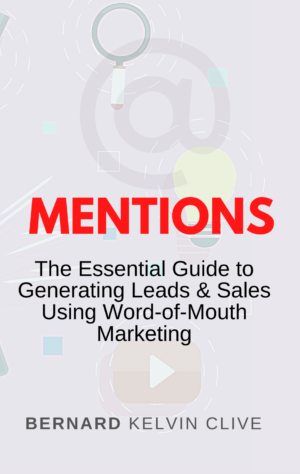
Using digital marketing to generate leads, sell products, and spread your brand name around the internet can seem like an overwhelming task. AIDA marketing campaigns (Awareness, Interest, Desire, Action) have been used effectively by businesses of all sizes since the first century AD. St Elmo Lewis developed this model in 1898 in an attempt to elucidate how personal selling tends to work.
The basic concept is simple: you entice someone to be aware of your business’s existence, capture their interest by educating them about what you do, create desire in them to purchase your product or service, and then guide them through the buying process until they are successfully purchasing from you and repeating customers.
Social media and Facebook Ads are examples of how advertising has changed since the development of the AIDA Model due to word-of-mouth marketing’s rise on all types of social media platforms.

To summarize how you can use the AIDA Marketing model effectively, here are 7 proven strategies;
- Hook them!
This is where you make a good first impression, which can turn leads into prospects and prospects into customers. Either an attention-grabbing photograph, caption, or introduction. Using an attention-grabbing intro is effective for blog posts, advertisements, and videos. For authors, your book title and cover are your best hooks. Like any good story, it should give people a taste of what’s to come. Don’t wait for people to get hooked; catch them with your opening line and reel them in for more. Try and recall all the ads that you’ve ever seen and the ones that got your attention, what was unique about them? The best intros lead readers through one problem or challenge to their solution; they describe one part of their pain (anticipating they will identify with it) and then show how your product or service relieves that pain. Just be sure not to focus solely on yourself — position yourself as someone who has successfully worked through a similar problem or overcome a similar challenge and wants to share how he did it. In other words, put real human faces on information about your company rather than relying exclusively on stats and metrics about revenue, number of employees, etc., especially if you are a startup.
An example of a hook Introduction: Are you tired of battling to have your book published online? Patricia has been attempting to get her book published on Amazon for four years, and she recently emailed me about her difficulties. And guess what? I solved her problems in 6 hours and published her book in 24 hours! View her book on Amazon by clicking on the link [….]
Try this exercise: -Find your current product or service, write 3 different captions for promoting it, and ask 3 friends of their opinion what they liked about it. Perform the same exercise with your images as well. Then test the results on social media.
Even if you are not a professional copywriter, this practice will ensure positive feedback for you.
- Keep your sales pitch concise and not overly comprehensive.
A sales team came over to the house a few months ago to give a presentation on the use of some healthy cooking tools. To begin with, they arrived late; we had just retired from a very exhausting day. The presentation took off on a good start, and everyone was thrilled about the offerings. However, after a while, they continued with their presentation even when it was evident it was late and there was no doubt we were all tired; at that point, my wife had fully shut down, her initial thrill had changed into dissatisfaction, and exhaustion had set in. The salesmen refused to read the signs and kept going on and on.
They only wanted to finish their presentation, but what the heck! We had had enough of it and didn’t want to continue. They killed our desire to buy the product.
Here is the lesson!
Don’t overwhelm potential customers with information. The goal is to conclude a sale as quickly as possible. If they have a lot of reading to do before making a purchase decision, it mostly serves as a deterrent. Give them just enough to make a decision.
It’s easy to believe that if you have a lot of information, people would feel confident that they’re making the right choice. True, your heart is in the right place, but your potential consumers, no matter how well you know your product or service, do not want to be sold to. When attempting to sell someone something they don’t need, keep in mind that you don’t know their needs as well as they do. Be direct and to the point.
Consumers are not just interested in information; they are looking for products and services that will improve their quality of life. In simple terms, consumers are asking companies to cut all long sales pitches and offer them what can meet their needs and wants. In sales, the one-minute man is the hero!
Don’t overwhelm the buyer with lengthy winded details once you’ve been referred; the recommendation does a large percentage of the sales for you. You simply must get right to the point!
If you can find a way to show them exactly how your product will deliver on its promises, chances are good that word-of-mouth marketing will take care of everything else. Make sure that your client feels special and excited about utilizing your products/services at every level, from beginning to end.
Always remember that clients hate being sold things!
- Provide an incentive for people to share it
People will share if you give them a compelling reason to. Sometimes just asking people to share works wonders. When I first got into cryptocurrency, I noticed that a lot of new coins attempting to make it used this strategy so effectively. Before the launch, they offer people the chance to own some of the coins by asking them to complete a survey or a specific task, or sometimes to refer some people to sign up, and each referral or sign up will end you with some points to win some of the coins for free. People are encouraged to share as a result of the enticing incentives.
The best way to get people to share your content (to market for you) is by providing incentives for them to do so. In other words, offer a piece of value in exchange for them signing up or sharing. You can do that by including a link at the end of your post which directs them somewhere special or offers some kind of freebie. Be careful, though: If it’s too good, they won’t want to share it with their friends (otherwise what’s in it for them?). Offer value in a way that they can honestly say I got something out of it, and I know others will too.
Offer an incentive in exchange for a share on Facebook or another social network: If you are writing a post that would appeal to your audience based on their interests and demographics, why not incentivize them to share it on Facebook? This can be done by offering a valuable piece of content as an incentive for them to do so. You could provide links at the end of your posts that point back to your website to direct traffic there from other places online.
Don’t offer something irrelevant: If someone clicks on a link expecting one thing and gets something different, they might feel cheated and rescind sharing. If you’re providing them with an incentive, make sure it’s relevant to what they were expecting when they clicked through.
- Maximize User Generated Content (UGC)
In 2016, GIGI, a new outfit from a Ghanaian up-and-coming trendy clothing firm, was released. The African print fabric design with brilliant colored material mix design swiftly rose to prominence. It was the buzz of the town, and everyone was enthralled by it. Wear Ghana chose to use photos taken by everyday consumers who purchased the outfits and shared them on social media. The brand started sharing photos of people wearing their garments on social media with the hashtags #WearGhana #GIGI.
Not only were the clothes stunning, but seeing individuals you know share photos of themselves wearing them was fascinating. Scroll through their Facebook timelines and see the different gorgeous ensembles, which have now gone global, with celebrities and huge businesses wearing them. They used user-generated material to promote their brand, which resulted in increased word-of-mouth marketing.
User generated content (UGC) is any media created by system users. These folks frequently make this content in order to convey their thoughts, share their stories, or just entertain others through pictures and videos. UGC can be created in a variety of formats, including blog entries, social media posts, articles, emails, and more.
Consumers are more interested in brands with which they have a personal connection, and this type of content can be a wonderful method to achieve that. The nicest part about UGC is that it is neither time-consuming nor expensive.
Similarly, when Twitter opened an office in Ghana in 2021, they began incorporating Ghanaian tweets in their outdoor marketing. This sparked a lot of curiosity and excitement. The average person was ecstatic to see their tweets on huge billboards, and what’s more, those chosen tweets struck a chord with the public. It generated a lot of engagements, both online and offline. That is the power of user-generated contents.
Here are a few things you can try:
- Encourage consumers to share content – photographs, videos, and so on – of themselves using your items. From reviews to fun facts.
- Provide incentives as needed to encourage more of your clientele to do so.
- To create more reach and buzz ask them to share the content on their timelines, reels, stories, and statues.
Bernard is an Author, Speaker. Lecturer and Corporate Trainer. He is a brand strategist at BKC consulting and runs the monthly Branding & Publishing Masterclass. visit www.BKC.name









